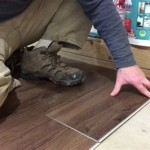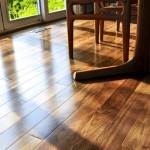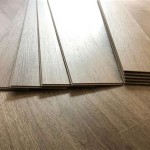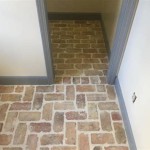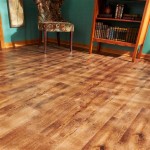Common Bamboo Flooring Problems and Their Solutions
Bamboo flooring, known for its durability and sustainability, offers a beautiful and eco-friendly option for homes and commercial spaces. However, like any flooring material, it can encounter problems over time. Understanding these issues and knowing how to address them can ensure your bamboo flooring retains its beauty and functionality.
1. Staining and Discoloration
Exposure to sunlight, spills, and moisture can cause bamboo flooring to stain or discolor. To prevent this, keep your floor clean and dry by wiping up spills immediately. Use curtains or blinds to block direct sunlight, and place mats at entrances to trap dirt and moisture.
If staining occurs, gently clean it with a damp cloth and a mild detergent. Avoid using harsh chemicals or abrasive cleaners, as they can damage the finish.
2. Buckling and Cupping
Excessive moisture can lead to buckling or cupping, where the planks expand and lift from the subfloor. This can happen if there's a leak, poor ventilation, or high humidity. Check for leaks and fix them promptly. Use a dehumidifier if necessary to control moisture levels.
To repair buckling, remove the offending planks and replace them with new ones. For cupping, sand the raised areas and then reapply a sealant.
3. Scratching and Denting
Bamboo flooring is generally hard and scratch-resistant, but heavy furniture, pets, and dropped objects can cause damage. Protect your floor by using felt pads under furniture, trimming pet nails, and cleaning up spills immediately.
Minor scratches can be buffed out with a fine-grit sandpaper. For deeper scratches, consult a professional flooring expert.
4. Splitting and Cracking
Splitting and cracking can occur due to improper installation, excessive moisture, or fluctuations in temperature and humidity. Ensure the subfloor is level and dry before installing bamboo flooring. Avoid using excessive glue or nails, and leave expansion gaps around the perimeter of the room.
Repairing splits and cracks requires replacing the damaged planks. Contact a flooring professional for assistance.
5. Fading
Bamboo flooring can fade over time, especially if exposed to direct sunlight. To minimize fading, keep your floor clean and dry, use curtains or blinds to block sunlight, and consider using a UV-resistant sealant.
Faded bamboo flooring can be refinished by sanding and reapplying a stain and finish. Consult a professional for the best results.
Conclusion
Understanding and addressing common bamboo flooring problems is essential for maintaining its beauty and durability. By following these tips, you can prevent and solve issues that may arise, ensuring your bamboo flooring remains a stylish and eco-friendly addition to your home or business.

Problems With Bamboo Flooring Moisture Damage The Company

Problems With Bamboo Flooring Scratches Or Dents The Company

Problems With Bamboo Flooring Water Damage The Company

Preventing Common Problems Of Bamboo Decking A Comprehensive Guide Anos Factory Manufacturer Supplier

What Are The Problems With Bamboo Flooring Topbamboos Com

Problems With Bamboo Flooring Water Damage The Company

Does Bamboo Flooring Need An Expansion Gap The Company

Wood Floor Cupping Cause And Effect Central

Bamboo Flooring Pros And Cons Forbes Home

Pros And Cons Of Bamboo Flooring
See Also
